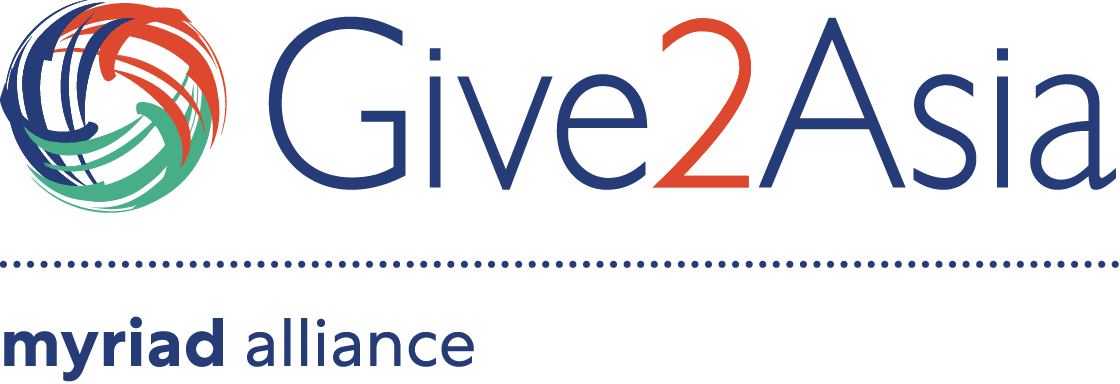Give2Asia’s work is made possible by a slew of highly qualified Field Advisors in 25 locations across the Asia Pacific. We profile this critical part of our workforce to provide on-the-ground insights into each local scene, and continue our spotlight series with Hyunju Kang in Korea.
As Field Advisor for Korea, you engage with many projects that connect to the social sector. Please tell us a little bit about yourself and what led you to this role.
I joined Give2Asia four months ago and have been working in the nonprofit sector in South Korea for more than 10 years. I was drawn to Give2Asia because I feel passionate about the idea of linking locals with corporations in the social sector. As a newcomer I am excited to learn more about opportunities to strengthen these connections as a Field Advisor.
What are your responsibilities as a Field Advisor for Give2Asia?
As with the other Field Advisors, my responsibility is to be the ears and eyes of grantees in South Korea. Many of them need a lot of English support or information, which is why I communicate between them.
Where do you reside in Korea?
I live about one and a half hours away from Seoul city. The area where I live has many active communities, which is one of my reasons for choosing to work as a Field Advisor and help build their capacity.
What are some challenges you have faced as a Field Advisor?
When I introduce Give2Asia to new grantees, I often face the challenge of explaining what Give2Asia is about. However, Give2Asia has high potential to be recognized globally, which is why I often view this challenge as an opportunity to inform grantees about the goals they could achieve with Give2Asia. It always becomes a good opportunity for me to introduce them to the fiscal sponsorships we offer.
What do you hope to achieve in the next couple of years as a Field Advisor?
I hope to raise awareness of what Give2Asia does in Korea and expand its presence. Our work is very needed and important. I have seen many projects in Korea that were not affective because there were gaps that needed to be filled between grantees and donors, and I hope to fill that gap. Korean grantees want to develop many funds and increase their presence on an international level, but they do not know how to do so. They do not know how to approach international donors and corporations. That is something I hope to work on with Give2Asia. Soon I plan to meet up with grantees because I am currently just calling them and emailing them. In Korea, it is really important to meet in person to see what they really need, because people are more open to talk in person. I would love to organize those kinds of workshops and interactions within our Give2Asia grantees.
Do you have any memorable experiences or favorite project you’ve worked on?
The best project I have been working on is with a school that supports North Korean refugees. They are trying to provide basic education for youth refugees ranging from 13 to 20 years old. I find it inspiring.
How does the social sector in Korea compare and contrast to those in other places of Asia that you have visited?
I have visited Laos, Cambodia, Vietnam, and Thailand, and I have seen that they are still in need of general philanthropic aid. In Korea, we are trying to think more about the impact of funds and we focus on sustainability and responsibility, while other Asian countries still need many basic needs to be met. This gap in the social sector between Korea and other countries needs to be addressed.
How do you see the social sector changing in the next ten years? And what are the challenges that the sector faces?
That is a difficult question. I think there are a lot of obstacles and challenges in Korea today. For example, the NPO sector is not popular among young people. It requires hard work and the salary is quite low compared to other jobs, which demotivates many youths from staying in the social sector for more than two or three years. But in order for the sector to be sustainable into the future, the youth has to stay for longer than the older generations. A lot of donors and grantees are trying to strengthen the capacity of young people to empower them. The social sector will change for the better little by little in this way, but that may take more than ten years. In ten years, I generally think the NPO sector will be more professional than it is now. The youth have learned more about the social sector from their schools, which has fostered their creative ideas. If we can mix the knowledge of older generations with that of new generations of students, the social sector will be better in about 15 years. The generation gap is definitely a challenge.
How have you become involved in the nonprofit and philanthropic sector in Korea?
After graduating from my university, I went to Cambodia as an international volunteer. The sector I worked in was with seniors in Cambodia. I really enjoyed my experience there and realized that there were a lot of things that still needed to be done in the international development sector. After coming back to Korea, I wanted to find something in that sector that would be helpful to my career. I tried to look for social enterprises and social NPOs because I wanted more sustainable projects in this sector.
Lightning Round…
How do you fill the rest of the time? What do you do for fun?
I try to find other side projects because my work with Give2Asia is more about communication and research. In life, I am more proactive and eager to meet people face to face to see what the youth in this sector need.
Favorite local food?
My favorite food is Tteokbokki, which is rice cake immersed in chili sauce. When I feel stressed, I usually make this to comfort myself. It is very accessible in restaurants and grocery stores.
What are some monuments or sites, in Korea or other parts of Asia, you have enjoyed seeing?
I like Korea a lot, but I have not really traveled much here. My favorite monument is in Cambodia, called Angkor Wat Temple. I visited it about 40 times. Seeing these monuments gives me comfort and I’d encourage other people to visit them as well.



